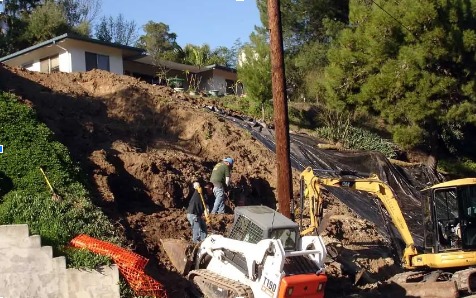Landslides present significant risks to both safety and property, particularly in hilly or mountainous regions. Addressing these hazards through effective landslide hill repair strategies is crucial to mitigate damage and prevent future occurrences. This article explores the essential techniques and best practices for successful landslide hill repair, focusing on engineering solutions, preventive measures, and ongoing maintenance.
Understanding Landslides and Their Impact
Landslides occur when there is a sudden and fast movement of earth materials down a slope, typically due to factors such as heavy rainfall, earthquakes, or human activities. These events can result in severe property damage, loss of life, and disruption of essential services. Effective landslide hill repair requires a comprehensive understanding of the specific causes and characteristics of the landslide to implement suitable remedial measures.
1. Site Assessment and Analysis
Before initiating any repair work, a thorough site assessment is essential. This involves analyzing the landslide’s extent, soil composition, drainage patterns, and underlying geological conditions. Key steps in this process include:
- Geotechnical Investigation: Employing geotechnical engineers to evaluate soil stability, groundwater levels, and potential triggers for landslides. This helps in designing appropriate repair methods tailored to the site’s conditions.
- Mapping and Monitoring: Creating detailed maps of the affected area and installing monitoring equipment to track soil movement and changes in groundwater levels. This data is vital for understanding the dynamics of the landslide and predicting future risks.
2. Design and Implementation of Repair Techniques
Based on the assessment, various repair techniques can be employed to stabilize the slope and prevent further erosion. Some effective strategies include:
- Retaining Walls: Constructing retaining walls made of materials such as concrete, masonry, or gabion baskets. These structures support the soil and reduce the pressure exerted by the slope. The design should consider factors such as wall height, load-bearing capacity, and drainage.
- Slope Grading and Benching: Regrading the slope to reduce its steepness and creating benches or terraces. This method redistributes the soil load and provides additional stability by breaking the slope into manageable segments.
- Drainage Control: Implementing effective drainage systems to manage surface and subsurface water. Techniques include installing perforated pipes, French drains, and surface ditches to divert water away from the slope. Proper drainage helps prevent the accumulation of water that can lead to soil saturation and further instability.
- Soil Nailing: Soil nailing involves inserting steel rods or nails into the slope to reinforce the soil and improve its stability. This technique is particularly useful for steep slopes where other methods may not be feasible.
- Geotextiles and Vegetation: Using geotextile fabrics to reinforce the soil and planting vegetation to stabilize the slope. Vegetation, such as grasses and shrubs, helps in binding the soil with their root systems, reducing erosion and promoting slope stability.
3. Preventive Measures and Maintenance
Preventive measures are crucial for ensuring the long-term effectiveness of landslide hill repair. Key practices include:
- Regular Inspections: Conducting periodic inspections of repaired slopes to identify signs of movement, erosion, or damage. Early detection of issues allows for timely intervention and maintenance.
- Maintenance of Drainage Systems: Ensuring that drainage systems remain clear of debris and are functioning properly. Regular maintenance prevents water buildup that could compromise the stability of the slope.
- Monitoring and Risk Assessment: Continuously monitoring the slope and assessing any changes in geological or environmental conditions. Advanced technologies, such as remote sensing and GPS, can provide real-time data on slope stability.
- Community Education: Educating local communities about landslide risks and preventive measures. Community awareness programs can help in early detection of potential landslide conditions and encourage practices that minimize risk.
4. Collaboration and Professional Expertise
Successful landslide hill repair often requires collaboration among various professionals, including civil engineers, geologists, and environmental experts. Engaging experienced professionals ensures that repair strategies are based on sound engineering principles and are tailored to the specific conditions of the site.
Conclusion
Effective landslide hill repair is a multifaceted process that involves careful assessment, appropriate repair techniques, and ongoing maintenance. By implementing a combination of engineering solutions and preventive measures, it is possible to stabilize slopes, protect property, and enhance safety. Through collaboration and professional expertise, communities can effectively manage and mitigate the risks associated with landslides, ensuring a safer and more resilient environment.


